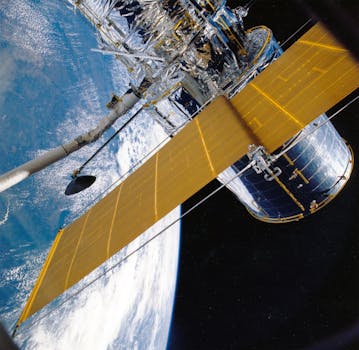The Future of Satellites: Revolutionizing Global Connectivity

The Future of Satellites is rapidly evolving, with advancements in space technology and increasing demand for global connectivity. The satellite industry has experienced significant growth in recent years, driven by the increasing need for high-speed internet, mobile connectivity, and remote sensing capabilities. As we look to the future, it is clear that satellites will play a vital role in shaping the global telecommunications landscape.
One of the key trends driving the future of satellites is the development of small satellite technology. Small satellites, also known as CubeSats, are miniature satellites that are designed to be smaller, lighter, and more affordable than traditional satellites. These satellites are typically launched into low Earth orbit and are used for a variety of applications, including Earth observation, communications, and scientific research. The use of small satellites is expected to increase significantly in the coming years, with many companies and organizations launching constellations of small satellites to provide global coverage and connectivity.
Another trend that is shaping the future of satellites is the development of reusable launch vehicles. Reusable launch vehicles, such as those being developed by SpaceX and Blue Origin, are designed to be launched into space and then return to Earth, where they can be refurbished and launched again. This technology has the potential to significantly reduce the cost of launching satellites into space, making it more accessible and affordable for companies and organizations to use satellites for a variety of applications.
Advancements in Satellite Technology
In addition to the development of small satellites and reusable launch vehicles, there are many other advancements in satellite technology that are shaping the future of the industry. One of the most significant advancements is the development of high-throughput satellites (HTS). HTS satellites are designed to provide high-speed internet connectivity to remote and underserved areas, and are being used to bridge the digital divide and provide access to information and communication technologies (ICTs) to people around the world.
Another area of advancement is in the field of satellite propulsion. Traditional satellites use chemical propulsion systems, which are heavy and inefficient. However, new propulsion systems, such as electric propulsion and advanced ion engines, are being developed to provide more efficient and longer-lasting propulsion. These systems are expected to significantly extend the lifespan of satellites and reduce the amount of fuel required to maintain their position in orbit.
Applications of Satellites
Satellites have a wide range of applications, from telecommunications and navigation to Earth observation and scientific research. One of the most significant applications of satellites is in the field of telecommunications. Satellites are used to provide mobile connectivity, internet access, and broadcast services to people around the world. They are particularly useful in remote and underserved areas, where traditional telecommunications infrastructure is limited or non-existent.
Satellites are also used for navigation and mapping. The Global Positioning System (GPS) is a network of satellites that provide location information and timing signals to GPS receivers on the ground. This system is used for a wide range of applications, from navigation and mapping to precision agriculture and surveying.
Challenges and Opportunities
Despite the many advancements and applications of satellites, there are also many challenges and opportunities that need to be addressed. One of the biggest challenges is the issue of space debris. As the number of satellites in orbit increases, so does the risk of collisions and the accumulation of space debris. This debris can pose a significant threat to the safety and operation of satellites, and efforts are being made to develop technologies and strategies to mitigate this risk.
Another challenge is the issue of regulatory frameworks. The use of satellites is regulated by a complex and often fragmented system of international and national laws and regulations. There is a need for more coordinated and effective regulatory frameworks to ensure that the benefits of satellites are realized while minimizing the risks and challenges.


